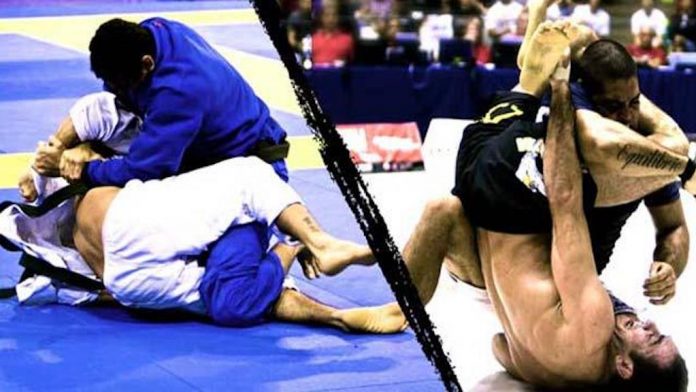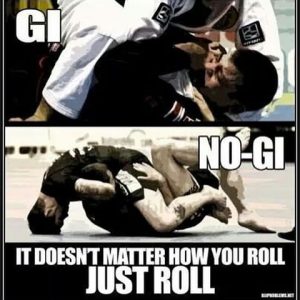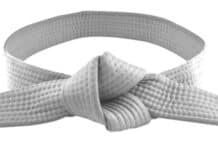
Among all the debates in the world of Jiu Jitsu, there’s one that stands out profusely in modern times. The Gi vs. No-Gi debate has been around since the first time someone in Brazil was too hot decided to take the top of the Gi off, but it’s gotten a different dimension lately. The popularity of No-Gi competition formats with original rules has caused the debate to shift towards the question ‘which type of competition is better’?
The rise of EBI and, more importantly, it’s unique and effective ruleset, has seen an old debate sparked into a new life. With plenty of organizations worldwide accepting the improved ruleset No-Gi seems to threaten the reign of Gi competitions as the proffered option. What makes the difference more than anything is the type of rules that apply to the competition, not the clothes worn by competitors. Before we decide on any common solution, let’ take into consideration all the arguments for both styles.
Traditional Gi competition format
Competing in the Gi has been associated with BJJ from its roots, and especially so after the world met Royce Gracie. The winner of the first few UFC events was a little Brazilian guy in a Gi, who destroyed every opponent with ease. Since then competing in the GI has become a BJJ staple.
All the major competitions against which the success of top competitors is measured are in the GI. The IBJJF is the leading world organization (although UAJJF is catching up fast) when it comes to traditional competition formats. Most of the events worldwide, and all of the highest level events are held by one of these two organizations. Seen by many modern competitors as too restrictive, both organizations have a very elaborate ruleset.
One might argue that IBJJF rules enforce stalling and it’s easy to see where that stems from. First of all, an IBJJF match can not end in a draw – there has to be a (clear) winner. The best way to win, of course, is by submission. Second, best are points, which are gathered according to positional dominance and control displayed throughout the match. When two competitors are really close, small details in the form of advantages decide the outcome. And if everything is in complete balance, it’s down to the referee’s decision.
Ruleset-wise, the “traditional” approach to Brazilian Jiu-Jitsu imposes a variety of restrictions when it comes to techniques and moves that can be used during a match. Namely, the IBJJF (and UAJJF) insists that different levels of competitors have should stick to a selection of techniques adequate to their level. For example, toe holds and kneebars are only legal for brown and black belts, while heel hooks are illegal for everyone.
The sub-only No-Gi competition format
No-Gi competitions are a completely different animal. Most of the No-Gi competitions are organized in a submission only, long duration format, in which there are no points. This platform is based on the idea that without worrying about or gunning for points to win, submissions are going to be the main focus. Every and all techniques an moves are considered legal at all levels.
Two major rulesets prevail when it comes to No-Gi competitions: Eddie Bravo’s EBI rules and those of the ADCC. 10th Planet founder and No-Gi ambassador Eddie Bravo have come up with arguably one of the best systems for competition. His system also offers a winner in every fight, though in a completely different fashion than the IBJJF. The EBI format is a sub-only one, putting the emphasis on submissions as the most desirable way to end a match. It allows for an extended time to work (10 minutes) after which, if there’s no winner, overtime rounds kick in. And overtime is where this formats gained its popularity. This is the unique fashion in which Bravo organized overtime rounds:
- A coin flip decides which competitor is on top
- The top competitor chooses on of two dominant positions to attack from and needs to submit the opponent. The bottom competitor has to escape the position before a submission is applied. The opponents get equal turns at the top position.
- There’s no time limit for the rounds. If after three repetitions of the above there’s no submission, the fastest escape time decides the winner.
ADCC (referred to as the Olympics of grappling) is set up in two-part rounds. The first part is sub-only with no points awarded, after which points come in to play. Overtime rounds are also included, very similar to IBJJF rules, but without limiting techniques.
The problem
When both of the competition formats are compared, there’s a clear reason why such large differences exist. And it is not because of the clothes that competitors wear. In all fairness, Gi does allow for increased control over the opponent, which can lead to stalling, but this is not always the case. Actually, sub only matches can be stalled just as effectively. So, the main problem lies elsewhere – the rules.
Rulesets are what defines the manner in which competitors approach matches. First of all, competitors are going to look for the win in any manner available. So if holding a position brings the victory they’re going to hold on for dear life.
The techniques that are allowed also play a major rule in how the match is going to take place. A competitor might decide that he/she is going to hold a position of unreal safety, where there’s no threat of submission just because all the attacks from the position in question are banned by the ruleset.
Two things are clear from the situation in which competitions are organized at the moment. Primarily, the rules of the format dictate the speed, direction and thus the level of entertainment of the match. Secondary, not one ruleset out there is perfect, guaranteeing entertainment and high-level Jiu Jitsu at the same time.
The hybrid solution
A practical approach would be to create a hybrid platform, taking the best out of both worlds in a unified ruleset. Politics aside (yeah, I wish) a unified ruleset would bring about both a great platform to compete on. Not only that, but one unified platform will settle the question of who the greatest competitors are once and for all.
Let’s look at a few ideas for improving competitive Jiu Jitsu:
- Throw advantages and referee decisions out. They’re just illogical safety nets for competitors who are shy to engage.
- Use an IBJJF/ADCC like the point system, with a few tweaks. Actually, Rickson Gracie has the perfect concepts for a practical point system for BJJ. Points should be awarded for submission attempts over positions, thus encouraging people to look for the finish.
- Have a reasonable time limit for open tournaments. 10-20 minute matches might be great for invitational events, but doing so at an open tournament means begin there for days. IBJJF like time limits seems to do the trick.
- Include EBI style overtime rounds. Since ADCC overtime rounds are a safety net of their own, a little tweak to EBI overtime would do the trick here. Going down to 1 round instead of three would ensure a winner in a timely and entertaining fashion.
- Remove the ban on techniques. Not really going the way of EBI, but limiting only the most difficult/dangerous of techniques for the beginners only. That means all is fair game for purple belts and above, while neck cranks would be out of bounds for blue belts. White belts would have to stay away from heel hooks and toe holds as well, but reaping is allowed for everyone.
Final thoughts
The ideas stated above are my own and are by no means a solution to the competition conundrum we have on our hands. However, it’s a direction of thought, that might offer a simple solution to a complex problem. It’s not that hard to imagine a ruleset that would benefit all involved and show the true beauty of our art at the same time.
After all, if nothing else works, we can always embrace Combat Jiu-Jitsu rules and slap the hell out of each other.











































